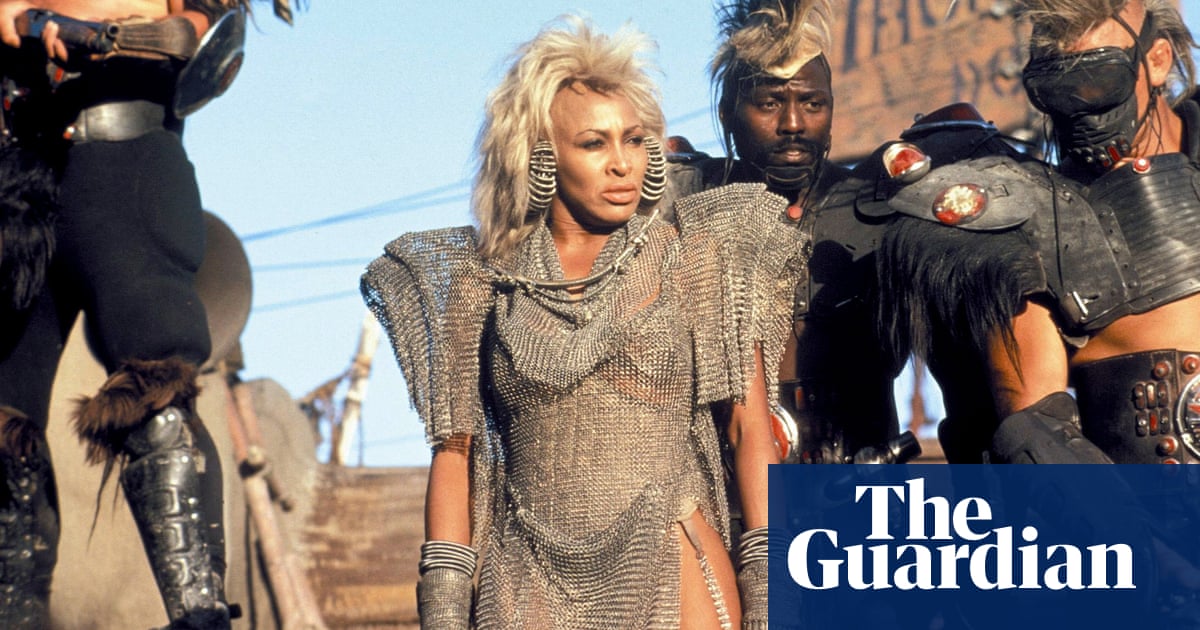
Acouple of days before her death in February 2021, Mary Wilson uploaded a video to her YouTube channel. Poignantly, it was full of forthcoming plans: the 60th anniversary of the Supremes’ debut single the following month; interviews she’d given for Black History Month, discussing the problems the group had faced touring the south of America in the 1960s; videos she was planning to upload, including a tribute to Florence Ballard, the former Supreme who had died 45 years previously, aged 32, after a struggle with alcoholism that had seen her fired from the group in 1967.
Her voice catches slightly when she mentions Ballard’s name: Wilson never gave up on her, even when Ballard appeared to have given up on herself. “She was always trying to help her,” says Wilson’s friend, actor Beverly Todd. “Mary loved Florence and she understood why Florence was in so much pain” – Wilson believed her alcoholism had less to do with the pressures of fame than the fact that Ballard had been raped at knifepoint in 1960 – “and she would invite her to become part of what she was doing. The last time, she was trying to get Florence back involved with the Supremes, but Florence told her, ‘Mary, why do you keep trying to help? Stop trying to help me.’”
That aside, the tone of the video is one of huge excitement. Wilson seems particularly thrilled that a collection of her solo work is about to be released, including her eponymous 1979 album, an extremely classy disco collection that had the misfortune to be released weeks after the Chicago Disco Demolition riot turned America’s radio and record labels against the sound it embodied; tracks she recorded for a follow-up with celebrated producer Gus Dudgeon that went unreleased when Motown dropped her from her contract; and some new recordings, including a song called Why Can’t We All Get Along? that ruminated on the strained relationship between the Supremes’ members. According to her daughter, Turkessa Babich, Wilson had been planning the collection for “about 20 years”: it’s now been released posthumously, as The Motown Anthology, augmented with Supremes tracks featuring Wilson’s lead vocals.
You can see why Mary Wilson might have wanted her work reappraised. She died a celebrity, still more than capable of packing out venues. Despite a solo recording dogged by extraordinary bad luck – quite aside from the disco backlash and the collapse of her relationship with Motown, there was the string of 1980s singles she recorded for Atlantic that went unreleased and the label that went bust the day after releasing her 1992 album Walk the Line – she happily adjusted to a role as what Motown expert and author Adam White calls “a kind of historian”, creating a 2008 exhibition of the Supremes’ gowns at the V&A, lecturing and writing books. Her autobiography, Dreamgirl, is remembered today for its dish-served-cold depiction of Diana Ross as a nightmarish diva, willing to quite literally push her bandmates out of the spotlight, but it was also an important document of Motown at its height, its veracity boosted by the fact that Wilson had kept a diary from the age of 17.
But for all her success, Wilson is underrated as a singer. She seldom took lead vocals with the Supremes – she sang or shared lead on just 28 songs over the band’s 16-year recording career. The Temptations’ Otis Williams thinks that “when she was singing behind Diana, you heard that personality, that glow”, but, as another Motown contemporary, Claudette Robinson of the Miracles puts it: “Sometimes if you’re, as they say, a background singer, people think that you can’t sing. They’re like, ‘oh, all they do are oohs and ahhs and whatever’, which is not true.” It certainly wasn’t true in Wilson’s case – she had a gorgeous voice, smoky and soft.
Behind the sparkling gowns and the ministrations of Motown’s famous charm school (designed, as its late boss Maxine Powell put it, to remove the rough edges from artists “from the projects … using street language, some of them rude and crude”), the Supremes were tough girls. Quite aside from their hard upbringings in Detroit’s Brewster-Douglass projects, they endured life on the road in a segregated America, where, as Robinson says, “you’d go to venues and think that you had a hotel, I’d made reservations early on, but you’d get there and somebody might be there with a shotgun or a rifle by their leg … you were not welcome”.
“Mary remembered being at a show in Miami in the 1960s,” says White, “and afterwards a white member of the audience came up to her and said, ‘I just love the Supremes, you’re wonderful – when you’re on television I let my family watch you.’ I mean, I still can’t quite believe someone would say that, but it’s a measure of the times and the prejudice that existed, and how the Supremes dealt with it and why they mattered. Their style and glamour made them attractive on TV – they were on the Ed Sullivan Show so often, and it reached into tens of millions of homes. They made a difference to the way the world evolved and to integration, I do believe that.”
Everyone I speak to about Wilson talks about her kindness and generosity, but everyone also agrees that she had a core of steel (“oh my God, Mary was a fighter,” laughs Todd). How tough she was became apparent when Diana Ross left the group in 1970. The general consensus was that the band were finished without their star, but Wilson thought otherwise, battling Motown over Ross’s replacement and guiding the Ross-less Supremes to a string of hits. “She was determined to carry on the Supremes,” says Williams. “She was the glue that held the Supremes together, and please believe me, that’s a rough role to play. I’ve been playing it for 60 years trying to keep something together when it seems like all adversity is up in your face, so I admired and loved Mary for her sticking to it. She was a wonderful spirit.”
The same toughness was evident when the Supremes finally split in 1977. Horrified at the sight of “fake” versions of classic soul bands touring without any original members – “she saw musicians suffering not getting paid, not getting recognised, having bogus groups go out there and perform after they worked their butts off to create this history,” remembers Babich – she first fought Motown for ownership of the band’s name, then became a lobbyist for the Truth in Music Advertising Act, aimed at stopping bands without original members passing themselves off as the definite article. It was subsequently enacted in 35 US states.
She was appointed a US cultural ambassador by Colin Powell and became a tireless activist on behalf of another change in the law designed to bring fairer royalties to artists and songwriters for songs recorded before 1972. Wilson was noted both for her unusual brand of persuasion – she was apparently big on walking into congress members’ offices, bursting into Stop! In the Name of Love, then demanding, “Don’t you think that’s worth protecting?” – and, once again, her indomitability. “She would look [politicians] in the eyes,” noted one impressed onlooker, “and your only response was ‘yes, ma’am’”.
“She was dynamic, she was outstanding, and what people will find out when they hear her album is that she could really sing,” says Robinson. “She had a voice, and she used her voice not only in the music world, but in the political world. She was supreme. She was and is supreme, always. Supreme in all that she did, supreme in all that she worked for.”












